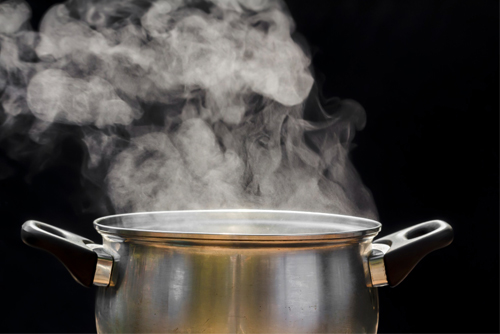Cooker hoods are essential appliances in kitchens designed to improve air quality and remove various airborne contaminants, odours, and pollutants generated during cooking. They play a crucial role in maintaining a clean, healthy, and comfortable kitchen environment. Here's a detailed description of what cooker hoods do:
Smoke and Odour
Removal
Cooker hoods effectively extract smoke and cooking odours generated during meal preparation, ensuring a pleasant and odour-free kitchen.
Grease and Oil Filtration
Equipped with grease filters, cooker hoods capture and collect grease and oil particles, preventing them from settling on surfaces and creating a greasy build-up.
Improved Air Circulation
By removing hot air, steam, and cooking fumes, cooker hoods enhance air circulation in the kitchen, contributing to a more comfortable cooking environment.
Removal of Harmful Pollutants
Cooking can produce harmful pollutants like carbon monoxide and volatile organic compounds (VOCs). Cooker hoods with powerful ventilation systems help eliminate these pollutants for healthier indoor air quality.
Prevention of Grease Build-up
By capturing grease and oil particles, cooker hoods prevent the accumulation of sticky residues on kitchen surfaces, making cleaning easier.
Fire Safety
Cooker hoods reduce the risk of kitchen fires by removing smoke and fumes, contributing to a safer cooking environment.
Enhanced Cooking Comfort
A well-ventilated kitchen with a cooker hood minimises discomfort from heat, steam, and cooking odours, ensuring a more enjoyable cooking experience.
Kitchen Aesthetic and Design
Modern cooker hoods come in various designs and finishes, serving as both functional appliances and aesthetic elements that complement kitchen décor.
Different Venting Options
Cooker hoods offer multiple venting options, including ducted and ductless systems, allowing flexibility in installation based on kitchen requirements.
Lighting
Many cooker hoods feature built-in lighting, providing ample illumination over the cooking area for improved visibility while preparing meals.
Are you interested in purchasing a new cooker hood? Check out our range of cooker hoods including free delivery and 5 years guarantee today
Frequently asked questions
Is a cooker hood necessary?
Whether a
cooker hood is necessary depends on various factors, including your cooking habits, kitchen layout, and ventilation system. Cooker hoods are highly recommended for kitchens without adequate natural ventilation, as they help remove cooking odours, grease, and pollutants, enhancing air quality and kitchen cleanliness. However, in well-ventilated kitchens or open-plan living spaces, the necessity of a cooker hood may be less pronounced.
What is the difference between a cooker hood and an extractor?
In general,
"cooker hood" and "extractor" are terms used interchangeably to refer to the same kitchen appliance. Both devices serve the primary function of extracting air, odours, and pollutants from the cooking area. Some people may use the term "extractor" more commonly in the UK, while "cooker hood" is often used in other regions.
What can you use instead of a cooker hood?
If installing a traditional
cooker hood is not possible or desirable, alternative options include:
- Recirculating extractors: These devices use filters to clean the air and then recirculate it back into the kitchen.
-
Downdraft extractors: They are installed flush with the kitchen countertop and rise when needed, extracting air directly from the cooking surface.
-
Ceiling-mounted extractors: Ideal for kitchens with high ceilings, they are suspended from the ceiling and offer effective ventilation.
What happens if a kitchen has no ventilation?
A kitchen without ventilation can experience several issues, including:
- Accumulation of cooking odours, smoke, and grease.
- Increased moisture levels, leading to potential mould and mildew growth.
- Poor indoor air quality due to the presence of pollutants from cooking.
- Higher temperatures and discomfort while cooking.
- Risk of false fire alarms if cooking produces excessive smoke.
What extraction rate do I need for my kitchen?
The required extraction rate for your kitchen depends on its size, cooking habits, and the type of cooker you use. As a general guideline, aim for a cooker hood with an extraction rate of at least 300 cubic meters per hour (m³/h) for smaller kitchens and 600 m³/h or more for larger kitchens or if you cook frequently with strong odours. For a more detailed explanation, check out
Understanding Extraction Rate: A Guide to Choosing the Right Cooker Hood.
What cooker hood is best if I have a low ceiling?
If you have a low ceiling, consider a slimline or
under-cabinet cooker hood. These models are designed to fit into tight spaces and provide effective ventilation without requiring significant overhead clearance.
What cooker hood is best if I have a high ceiling?
For kitchens with high ceilings,
ceiling-mounted or island cooker hoods are ideal options. These hoods are suspended from the ceiling and offer efficient extraction while making the most of the vertical space.
What diameter ducting does a cooker hood need?
The diameter of the ducting for a cooker hood typically varies, but common sizes include 150mm (6 inches) and 125mm (5 inches). The specific size you need depends on the model of cooker hood and its exhaust outlet. It's essential to follow the manufacturer's recommendations for ducting size to ensure proper ventilation performance.


